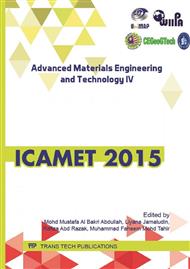p.221
p.228
p.232
p.237
p.242
p.246
p.251
p.256
p.261
The Effect of Sintering Temperature to the Microstructure of PM F75 (Co-Cr-Mo) Alloy
Abstract:
PM Co-Cr-Mo (F75) alloys are widely used in implants due to their mechanical properties, good wear resistance and as well as biocompatibility. Currently, they are fabricated by casting technique. In this present research, F75 was fabricated by powder metallurgy technique. The powder was mixed with 2 wt. % of stearic acid in order to form green body and compacted at 500 MPa. The effect of sintering temperature was investigated to observe its effect to the microstructure of F75 (Co-Cr-Mo). Samples were sintered for 2 hours at 2 different temperatures (1250°C and 1300°C) with 10°C/min in argon atmosphere. Physical properties such as density and porosity were obtained by Archimedes principle. Microstructure was observed by using optical microscope Olympus BX41M. The results indicate that increasing the sintering temperature will influence the density and porosity, thus the microstructure itself.
Info:
Periodical:
Pages:
242-245
Citation:
Online since:
May 2016
Price:
Сopyright:
© 2016 Trans Tech Publications Ltd. All Rights Reserved
Share:
Citation:


